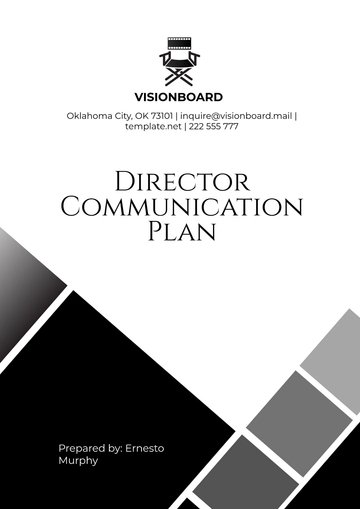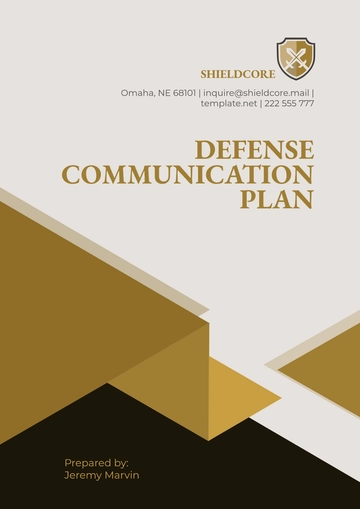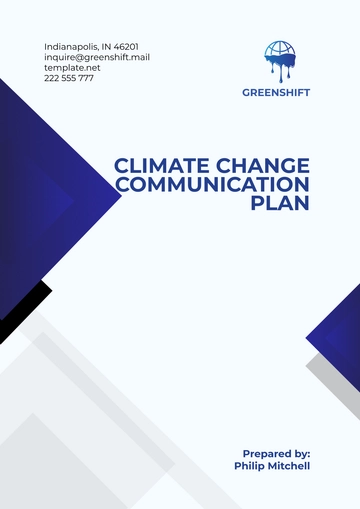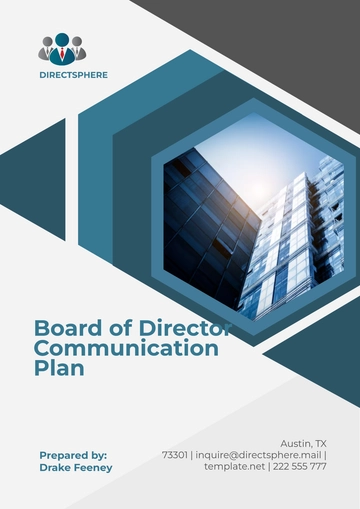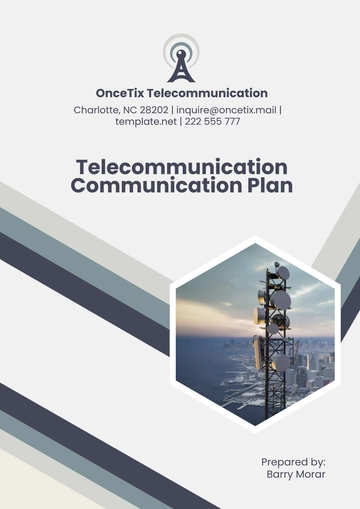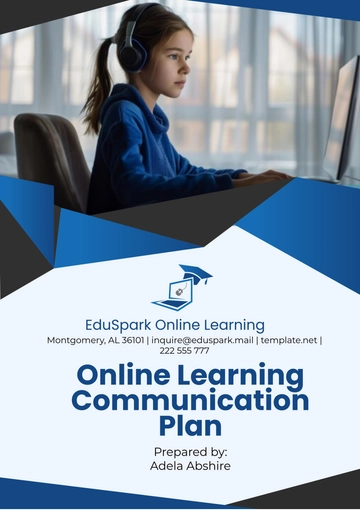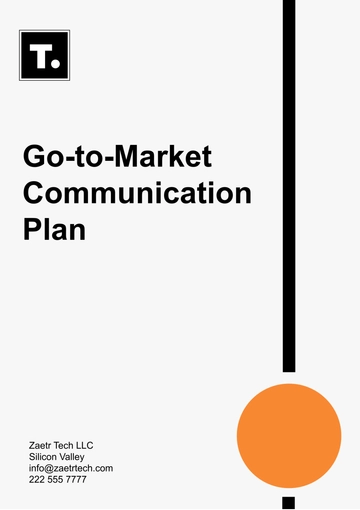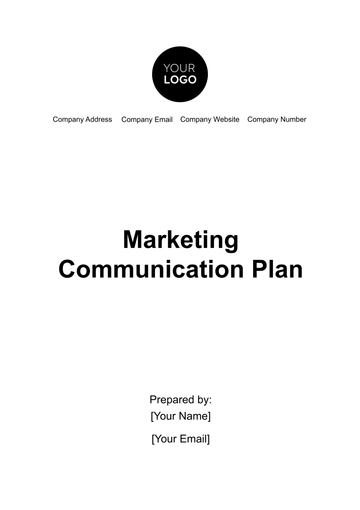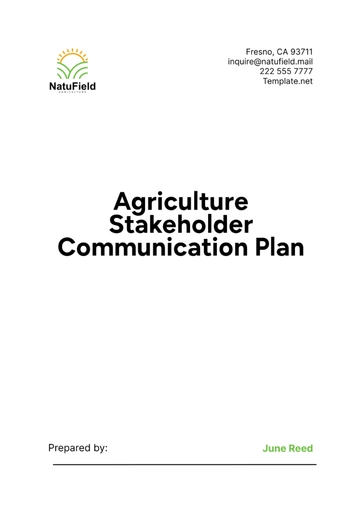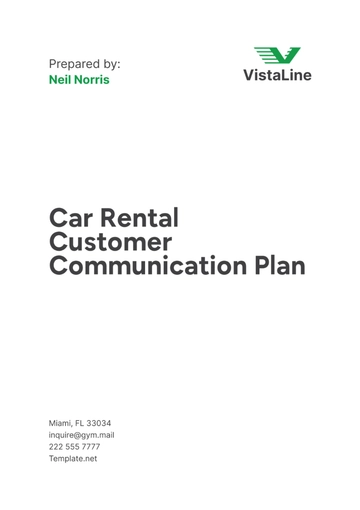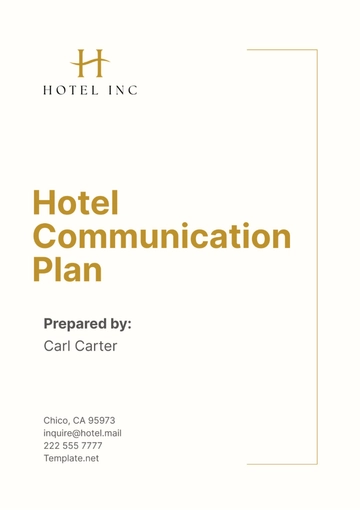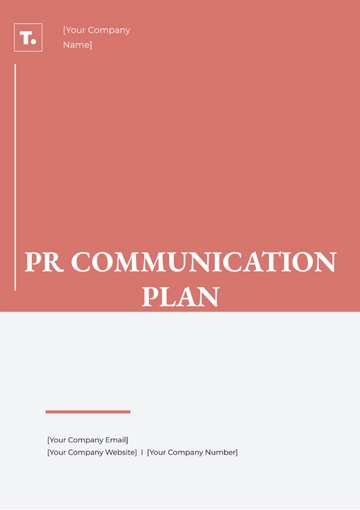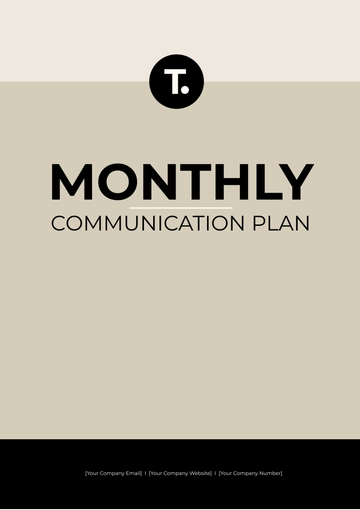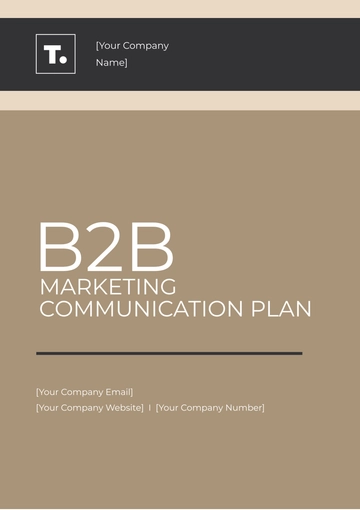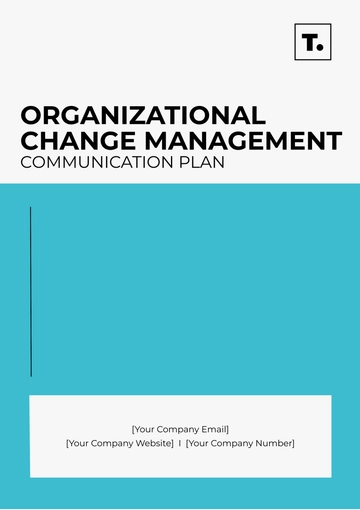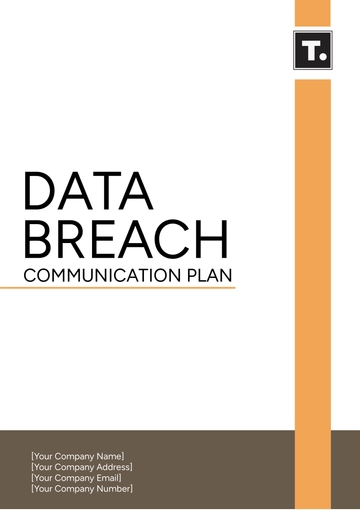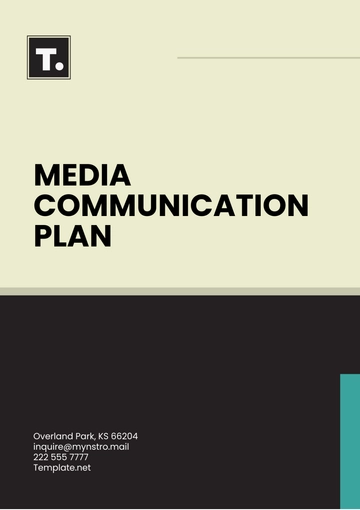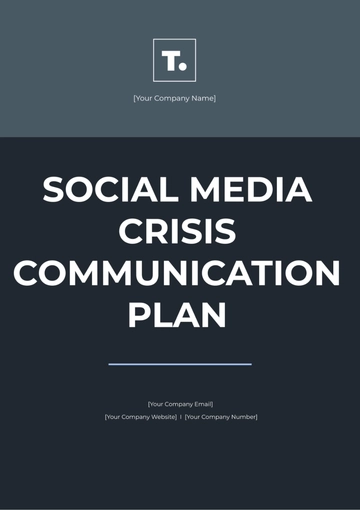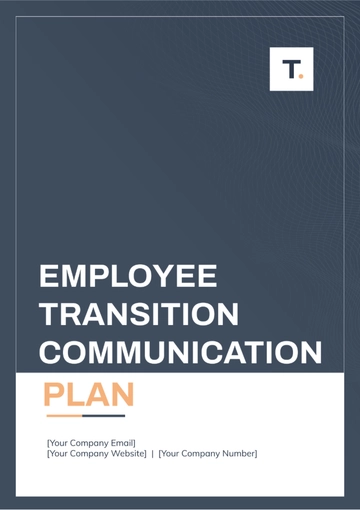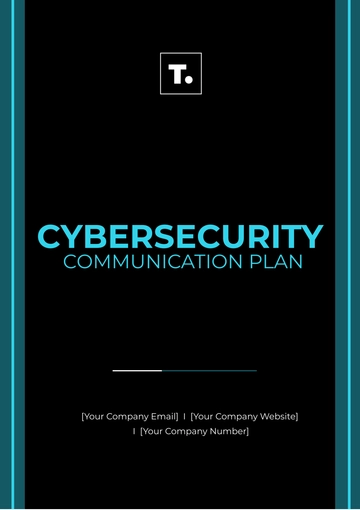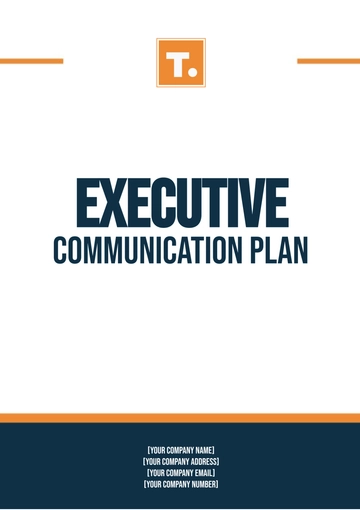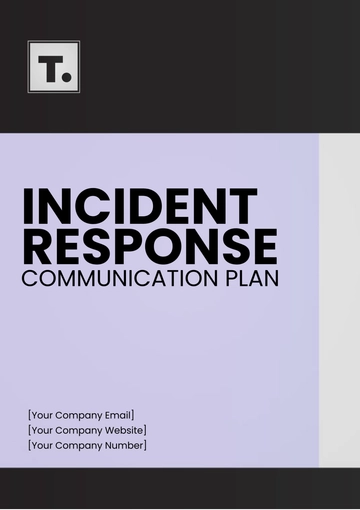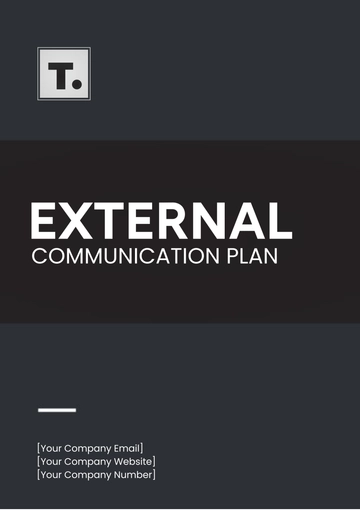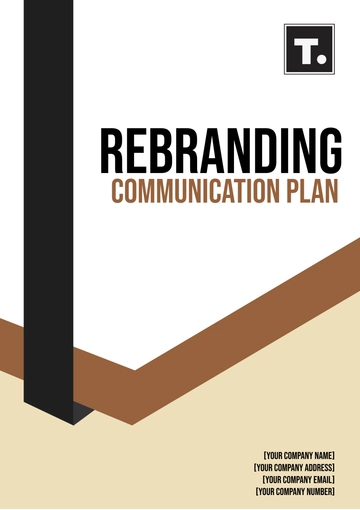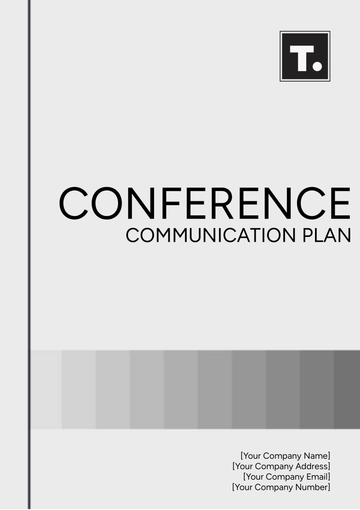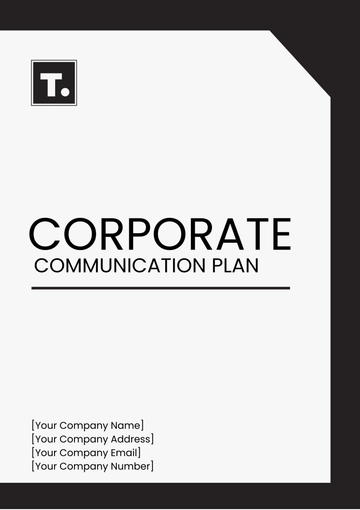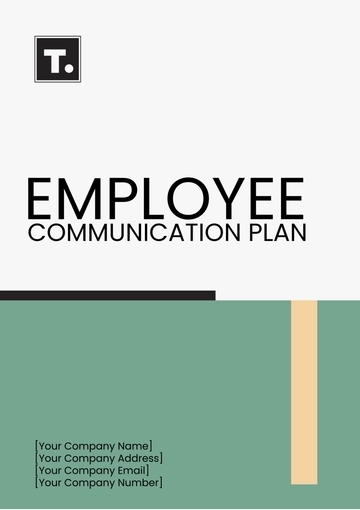Free Car Rental Communication Plan

1. Introduction
Effective communication is critical in the car rental industry, where clear and timely interactions with customers and internal stakeholders can significantly enhance service quality and operational efficiency. This comprehensive communication plan for [Your Company Name] outlines strategies and practices to ensure that all communication is clear, consistent, and effective, thereby improving customer satisfaction, employee engagement, and overall business performance.
2. Objectives
Effective communication is the cornerstone of any successful business, especially in the car rental industry where customer satisfaction and operational efficiency are paramount. The communication plan for [Your Company Name] is designed with several key objectives in mind, each aimed at addressing specific areas of communication to enhance overall performance and customer satisfaction. These objectives are critical to ensuring the company remains competitive, efficient, and highly regarded in the marketplace.
2.1 Ensure Clear and Consistent Communication with Customers at All Stages of the Rental Process
Clear and consistent communication with customers is vital at every stage of the rental process—from the initial inquiry to the final return of the vehicle. This objective focuses on providing accurate and timely information to customers to avoid confusion and ensure a smooth rental experience.
Pre-Rental Stage
At the pre-rental stage, customers need detailed information about available vehicles, rental terms, pricing, and policies. This can be achieved through:
Comprehensive Website Information: The company website should have a user-friendly interface with detailed descriptions of vehicle options, pricing, rental terms, and FAQs.
Clear Booking Confirmation: After a booking is made, customers should receive an immediate confirmation via email or SMS, outlining the details of their reservation, pick-up instructions, and required documentation.
During Rental Stage
During the rental period, maintaining open lines of communication is crucial to address any issues or questions that may arise.
Onboarding Process: At the vehicle pick-up, staff should provide a thorough briefing, including vehicle features, rental agreement review, and emergency contact information.
24/7 Customer Support: Offering round-the-clock support through phone, email, or chat ensures customers can get assistance whenever needed.
Post-Rental Stage
Post-rental communication helps in gathering feedback and ensuring customer satisfaction.
Return Instructions: Clear and concise instructions for vehicle return should be communicated to avoid any confusion or delays.
Feedback and Surveys: After the rental period, customers should be invited to provide feedback through surveys, which can help identify areas for improvement.
2.2 Improve Internal Communication Among Employees to Enhance Operational Efficiency
Efficient internal communication is essential for smooth operations and high employee morale. This objective focuses on creating robust channels and practices for internal communication to ensure that all employees are informed, engaged, and aligned with company goals.
Regular Meetings and Briefings
Holding regular meetings and briefings helps keep all team members updated on company policies, operational changes, and other important information.
Daily Stand-ups: Short daily meetings to discuss daily tasks, any immediate issues, and team goals.
Weekly and Monthly Briefings: More comprehensive sessions to review performance, discuss strategic initiatives, and plan for upcoming events.
Internal Communication Platforms
Utilizing digital tools to facilitate real-time communication and collaboration among employees.
Intranet: An internal website that serves as a central hub for company news, policies, training materials, and other resources.
Messaging Apps: Tools like Slack or Microsoft Teams for instant messaging, file sharing, and collaboration on projects.
Training and Development
Regular training sessions to ensure that all employees are well-informed about company protocols and are equipped with the necessary skills to perform their duties effectively.
2.3 Establish a Framework for Handling Customer Inquiries, Complaints, and Feedback Effectively
A structured approach to managing customer interactions is crucial for maintaining high levels of customer satisfaction. This objective focuses on establishing clear protocols for handling inquiries, complaints, and feedback to ensure that all customer interactions are handled efficiently and professionally.
Inquiry Management
Providing multiple channels for customers to reach out with inquiries and ensuring prompt responses.
Customer Service Hotline: A dedicated phone line for customer inquiries, staffed with knowledgeable representatives.
Email and Chat Support: Offering additional options for customers to get their questions answered quickly.
Complaint Resolution
Developing a systematic approach to handling complaints to ensure they are resolved quickly and to the customer’s satisfaction.
Standard Operating Procedures (SOPs): Detailed guidelines for staff on how to handle and escalate complaints.
Customer Feedback Loop: Regularly reviewing and analyzing complaints to identify common issues and improve processes.
Feedback Collection
Actively seeking customer feedback to understand their experiences and identify areas for improvement.
Post-Rental Surveys: Sending out surveys after each rental to gather customer feedback.
Review Platforms: Encouraging customers to leave reviews on popular platforms like Google and Yelp.
2.4 Utilize Modern Communication Tools and Technologies to Streamline Processes and Improve Customer Experiences
Leveraging technology is essential for enhancing communication efficiency and providing a seamless customer experience. This objective focuses on integrating modern communication tools into various aspects of the business to streamline processes and improve overall customer satisfaction.
Digital Booking Platforms
Providing customers with easy-to-use online booking platforms that offer real-time availability and instant confirmations.
Website and Mobile App: Ensuring that both platforms are optimized for ease of use and accessibility.
Automated Notifications
Using automated systems to send timely notifications to customers about their rental status.
Booking Confirmations and Reminders: Sending automated emails or SMS messages to confirm bookings and remind customers of their pick-up and return times.
Service Alerts: Notifying customers about important updates, such as vehicle recalls or maintenance schedules.
Customer Relationship Management (CRM) Systems
Implementing CRM systems to manage customer interactions and data effectively.
Personalized Communication: Using CRM data to tailor communications to individual customer preferences and histories.
Efficient Record-Keeping: Ensuring all customer interactions are logged and accessible for reference by customer service representatives.
2.5 Promote the Brand Image and Reputation of [Your Company Name] Through Effective Marketing Communications
Building a strong brand image and reputation is crucial for attracting and retaining customers. This objective focuses on utilizing various marketing communication strategies to enhance the visibility and reputation of [Your Company Name].
Social Media Marketing
Engaging with customers on social media platforms to build a community and promote the brand.
Content Creation: Regularly posting engaging content, including promotions, customer testimonials, and industry news.
Interactive Campaigns: Running contests, polls, and Q&A sessions to interact with followers and increase engagement.
Content Marketing
Creating valuable and informative content to establish [Your Company Name] as an authority in the car rental industry.
Blog Posts: Publishing articles on travel tips, vehicle maintenance, and company updates.
Video Content: Producing videos that showcase the company’s services, highlight customer stories, and provide useful information.
Public Relations
Building and maintaining a positive public image through strategic PR efforts.
Press Releases: Issuing press releases to announce new services, partnerships, and company milestones.
Media Outreach: Establishing relationships with journalists and influencers to gain media coverage and endorsements.
Email Marketing
Using email campaigns to communicate with customers about promotions, new services, and company news.
Newsletters: Sending regular newsletters to keep customers informed and engaged.
Targeted Campaigns: Personalizing email content based on customer preferences and past behavior to increase relevance and effectiveness.
By achieving these objectives, [Your Company Name] can ensure that its communication strategies are effective, customer-focused, and aligned with its overall business goals. This comprehensive approach will not only enhance customer satisfaction and loyalty but also improve operational efficiency and drive business growth.
3. Stakeholder Analysis
3.1 Customers
Customers are the primary stakeholders and include individuals, corporate clients, and travel agencies. Their needs and expectations vary, but all require clear and timely information regarding rental procedures, pricing, vehicle availability, and return policies.
3.2 Employees
Employees, including customer service representatives, rental agents, maintenance staff, and managers, play a crucial role in executing the communication plan. Effective internal communication ensures that all team members are informed and aligned with company policies and procedures.
3.3 Corporate Clients
Corporate clients often have specific requirements for vehicle rentals, including long-term leases and customized service agreements. Clear communication with corporate clients is essential to meet their unique needs and maintain long-term relationships.
3.4 Travel Agencies
Travel agencies act as intermediaries, booking rentals on behalf of their clients. It is important to provide them with accurate and up-to-date information to facilitate smooth transactions.
4. Communication Channels
4.1 Customer-Facing Channels
4.1.1 Website
The company website is a primary source of information for customers. It should provide comprehensive details on rental options, pricing, policies, and contact information. A user-friendly design and intuitive navigation are essential for an effective website.
4.1.2 Mobile App
A mobile app enhances customer convenience by allowing them to book, modify, and manage their rentals on the go. The app should offer real-time updates, notifications, and easy access to customer support.
4.1.3 Social Media
Social media platforms like Facebook, Twitter, and Instagram are valuable for engaging with customers, promoting offers, and providing quick updates. Active social media management helps build a community and enhances the company's online presence.
4.1.4 Email and SMS
Email and SMS are effective for sending booking confirmations, reminders, promotional offers, and customer surveys. Automated systems can ensure timely communication without manual intervention.
4.2 Internal Communication Channels
4.2.1 Intranet
An intranet platform serves as a central hub for internal communications, where employees can access company news, policies, training materials, and other resources.
4.2.2 Meetings and Briefings
Regular meetings and briefings ensure that all team members are informed about updates, policies, and operational changes. These sessions can be held in person or via video conferencing tools.
4.2.3 Internal Messaging Systems
Tools like Slack or Microsoft Teams facilitate real-time communication among employees, enabling quick resolution of issues and efficient collaboration.
5. Communication Strategies
5.1 Pre-Rental Communication
5.1.1 Booking Confirmation
Upon booking, customers should receive a confirmation email or SMS with details of their reservation, including pick-up location, vehicle type, rental period, and any additional services selected.
5.1.2 Pre-Arrival Instructions
Prior to the rental period, customers should receive clear instructions on the pick-up process, required documentation, and any other pertinent information to ensure a smooth experience.
5.2 During Rental Communication
5.2.1 Onboarding Process
At the time of vehicle pick-up, customer service representatives should provide a thorough onboarding process, including a vehicle inspection, operational instructions, and a review of the rental agreement.
5.2.2 Support and Assistance
Throughout the rental period, customers should have access to 24/7 support through phone, email, or chat to address any issues or questions.
5.3 Post-Rental Communication
5.3.1 Return Instructions
Clear instructions on the return process should be provided, including the location, timing, and any necessary procedures to complete the return efficiently.
5.3.2 Feedback and Surveys
Following the rental, customers should be invited to provide feedback through surveys. This information is invaluable for identifying areas for improvement and enhancing the overall customer experience.
6. Marketing Communications
6.1 Promotional Campaigns
6.1.1 Email Marketing
Email campaigns can promote special offers, discounts, and new services. Personalizing these emails based on customer preferences and past behavior can increase engagement and conversion rates.
6.1.2 Social Media Advertising
Targeted ads on social media platforms can reach potential customers based on demographics, interests, and browsing behavior. Regular posts and interactive content can also help maintain a strong online presence.
6.2 Content Marketing
6.2.1 Blog and Articles
Publishing informative and engaging content on the company blog can drive traffic to the website and establish [Your Company Name] as an industry authority. Topics can include travel tips, vehicle maintenance advice, and company news.
6.2.2 Video Content
Video content, including tutorials, customer testimonials, and promotional videos, can be highly effective in capturing the audience's attention and conveying key messages.
6.3 Public Relations
6.3.1 Press Releases
Regular press releases can announce new services, partnerships, and milestones, helping to build credibility and attract media coverage.
6.3.2 Community Engagement
Participating in community events and supporting local initiatives can enhance the company's image and foster positive relationships with the community.
7. Crisis Communication Plan
7.1 Identifying Potential Crises
Potential crises in the car rental industry can include vehicle recalls, accidents involving rental vehicles, data breaches, and negative publicity. It is essential to identify these risks and prepare a response plan.
7.2 Crisis Response Team
A dedicated crisis response team should be established, including representatives from customer service, legal, operations, and public relations. This team will be responsible for managing communication during a crisis.
7.3 Communication Protocols
7.3.1 Internal Communication
Ensure all employees are informed about the crisis and the company's response plan. Regular updates should be provided to keep everyone informed.
7.3.2 External Communication
Communicate with customers, stakeholders, and the media transparently and promptly. Provide accurate information about the crisis and the steps being taken to resolve it.
7.4 Post-Crisis Evaluation
After the crisis has been resolved, conduct a thorough evaluation to identify lessons learned and improve future crisis management plans.
8. Evaluation and Monitoring
8.1 Key Performance Indicators (KPIs)
To measure the effectiveness of the communication plan, establish KPIs such as customer satisfaction scores, response times, employee engagement levels, and social media engagement metrics.
8.2 Regular Reviews
Conduct regular reviews of the communication plan to ensure it remains effective and relevant. Gather feedback from customers and employees to identify areas for improvement.
8.3 Continuous Improvement
Based on the evaluations and feedback, continuously update and refine the communication strategies and tools to enhance their effectiveness.
9. Conclusion
A well-structured communication plan is essential for the success of [Your Company Name] in the competitive car rental industry. By ensuring clear and consistent communication with customers and employees, the company can enhance service quality, improve operational efficiency, and strengthen its brand reputation. Implementing the strategies outlined in this plan will help [Your Company Name] achieve its communication objectives and drive business growth.
- 100% Customizable, free editor
- Access 1 Million+ Templates, photo’s & graphics
- Download or share as a template
- Click and replace photos, graphics, text, backgrounds
- Resize, crop, AI write & more
- Access advanced editor
Streamline your messaging with Template.net's Car Rental Communication Plan Template. Designed to enhance clarity and consistency across your business communications, this template is fully customizable and editable using our AI editor tool. Organize your communication strategies effectively to improve engagement and operational efficiency. Elevate your car rental service with Template.net.
